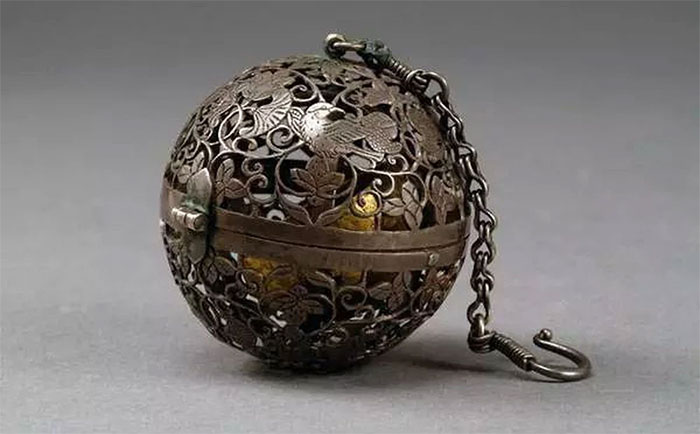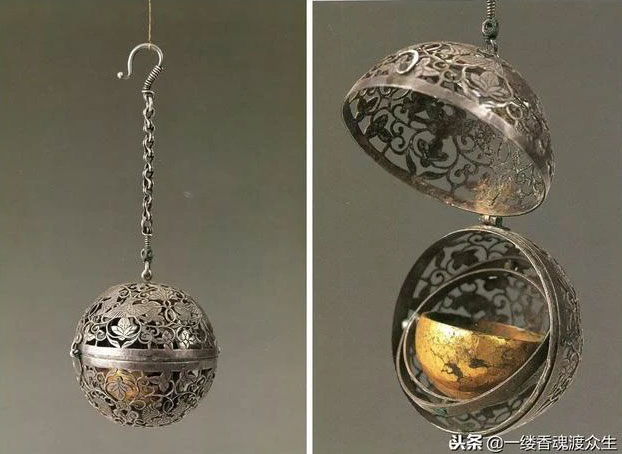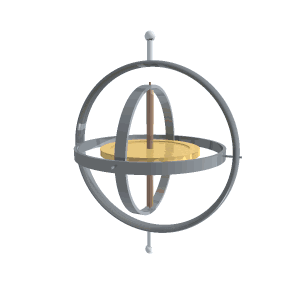According to scientists, this heater is uniquely designed to stay warm all night long.
The Enigmatic Heater
In 1987, a significant number of rare treasures from the Tang Dynasty were unearthed from an underground palace at the foot of the Famen Temple in Fuping County, Shaanxi Province, China. In addition to ceramics and artifacts made of gold and silver found within the palace, archaeologists discovered two spherical incense burners that also function as heaters made of silver, featuring an exceptionally unique internal design. One of these incense burners has a diameter of up to 128mm and has been recognized as the largest surviving silver incense burner in China.
It was later taken to the exhibition hall of the China Science and Technology Museum and named “Bi Zhong Incense Burner.” This incense burner, which also serves as a heater, is not only an artistic treasure but also a unique invention that showcases the intelligence of ancient people.


During one excavation, archaeologists unexpectedly found these uniquely designed incense burners that also serve as heaters. (Image: Baidu)
This incense burner dates back 2,100 years, to the Western Han Dynasty. Its remarkable feature is that it can not only burn incense but also be used as a warming heater under blankets.
The outer shell of the heater is made by joining two hollow hemispheres. In addition to the shell, which is intricately engraved with patterns of clouds, dragons, and phoenixes to facilitate heat transfer from the inside, it can be seen that the body of the heater consists of a solid hemispherical core attached in the center.
Outside the body of the heater are two concentric rings connected by three perpendicular rotating shafts. These shafts ensure that the concentric rings do not touch each other, allowing the inner body of the heater to rotate freely in any direction while remaining horizontal. When in use, hot coals or incense are placed inside the hemispherical body. Due to its anti-gravity design, even when placed under blankets, the coals do not fall out and can keep warm throughout the night.
Unexpected Discoveries
Later, when scientists thoroughly studied this incense burner and heater, they discovered that it was constructed entirely in accordance with the principles of a gyroscope. A gyroscope is a physical application based on the principle of conservation of angular momentum.

This enigmatic heater is designed similarly to an anti-gravity gyroscope. (Image: Baidu)
It is designed with a wheel or rotating disk with freely rotating axes in all directions. The orientation changes depending on the external torque rather than being related to a high-speed spinning object without requiring a large angular momentum. Because the torque is minimized by connecting the device in universal joints (like a gimbal), its direction remains nearly fixed regardless of any movement of the object it rests upon.
A practical application of the gyroscope is the compass. Compasses are currently used in various vehicles such as boats, airplanes, and rockets.
Thanks to this principle, compasses continue to function normally regardless of how strong the waves or how complex the wind conditions may be.
The great scientist Leonardo Da Vinci was the first to propose a design for the gyroscope.
It wasn’t until the 16th century that physicist Gerolamo Cardano officially constructed the gyroscope, leading to its widespread use around the world.

This heater exemplifies the profound intelligence of ancient people. (Image: Baidu)
The earliest record of the Bi Zhong incense burner can be found in the work “Elegy of Beautiful Women” by the writer Sima Qian from the Western Han Dynasty.
Additionally, in the book “Miscellaneous Records of the Western Capital”, it is noted: “However, the skilled craftsmen of Chang’an created a type of incense burner that could both burn incense and serve as a heater. Their purpose was to transport them everywhere without damaging the contents.”
Furthermore, according to the Baike page, the Bi Zhong incense burner has been confirmed by archaeologists to date back 2,100 years, meaning it predates the gyroscope by 1,000 years. This showcases the deep intelligence of ancient people that should inspire admiration from future generations.


















































